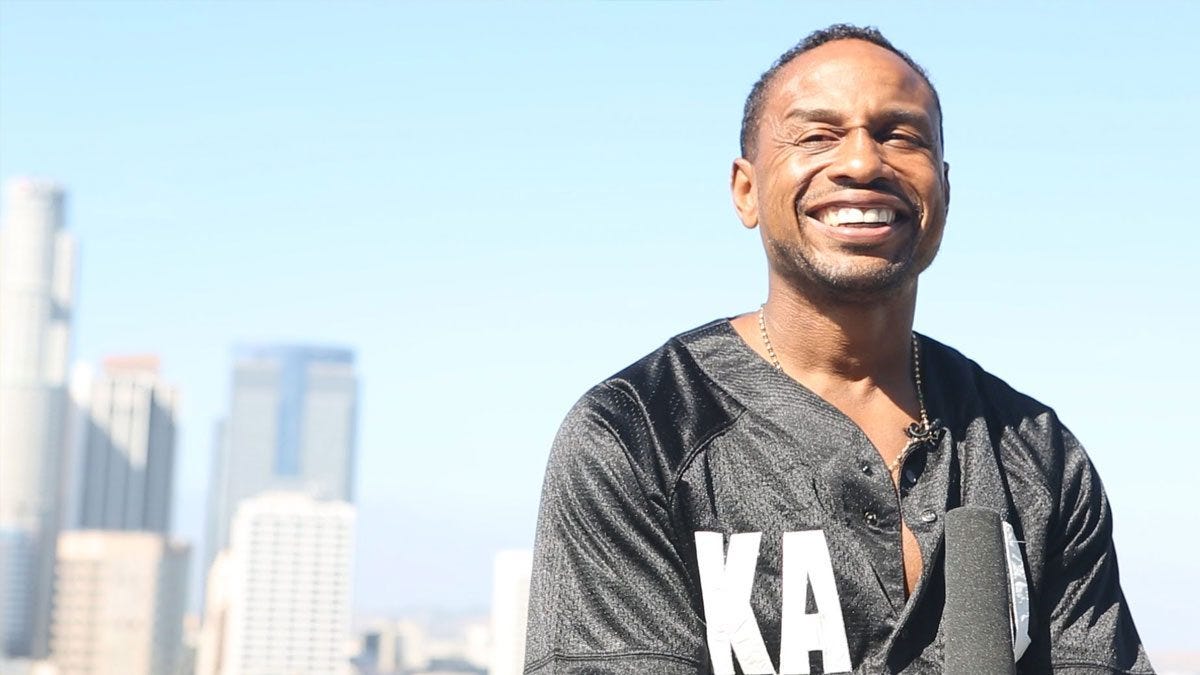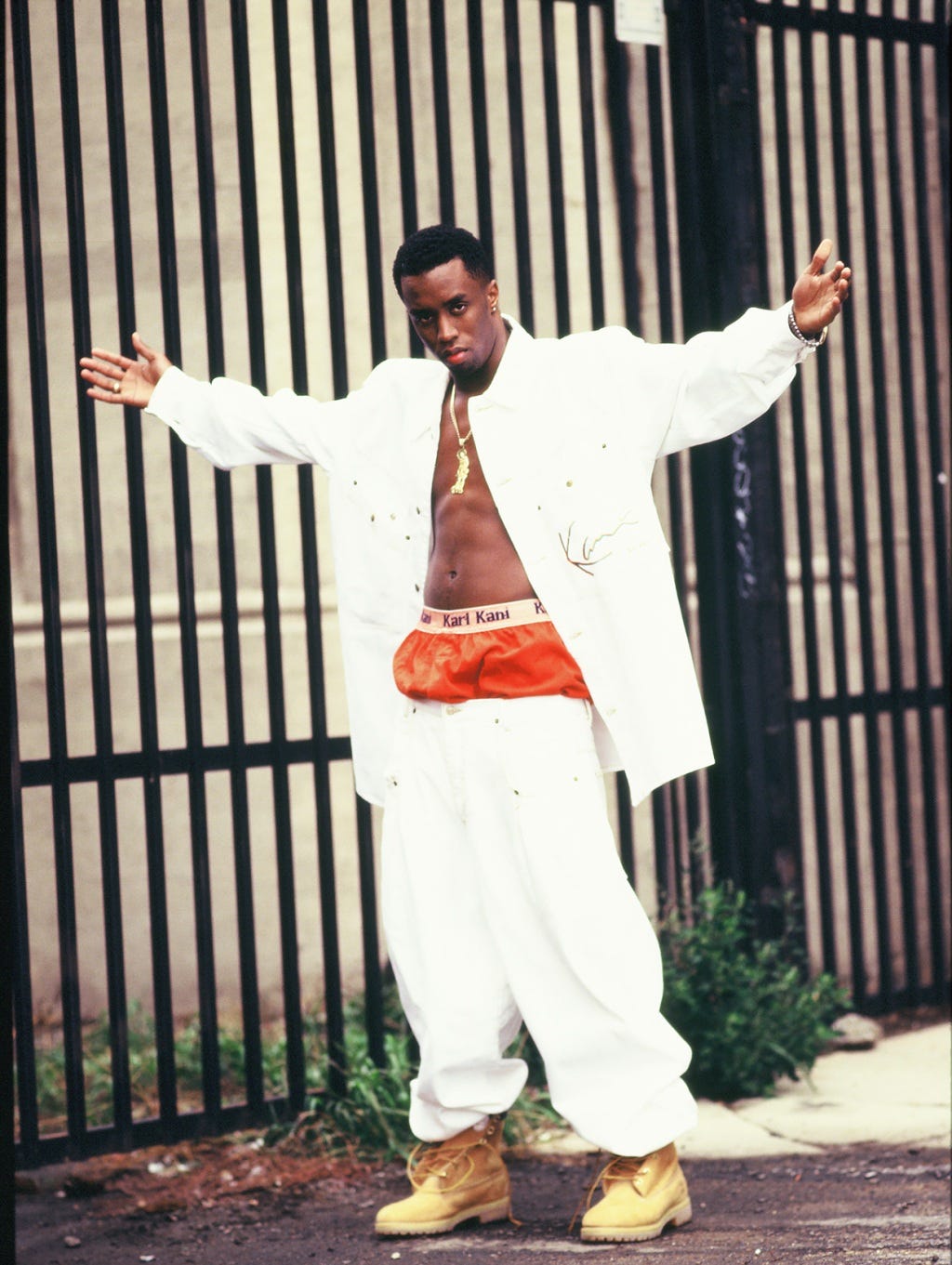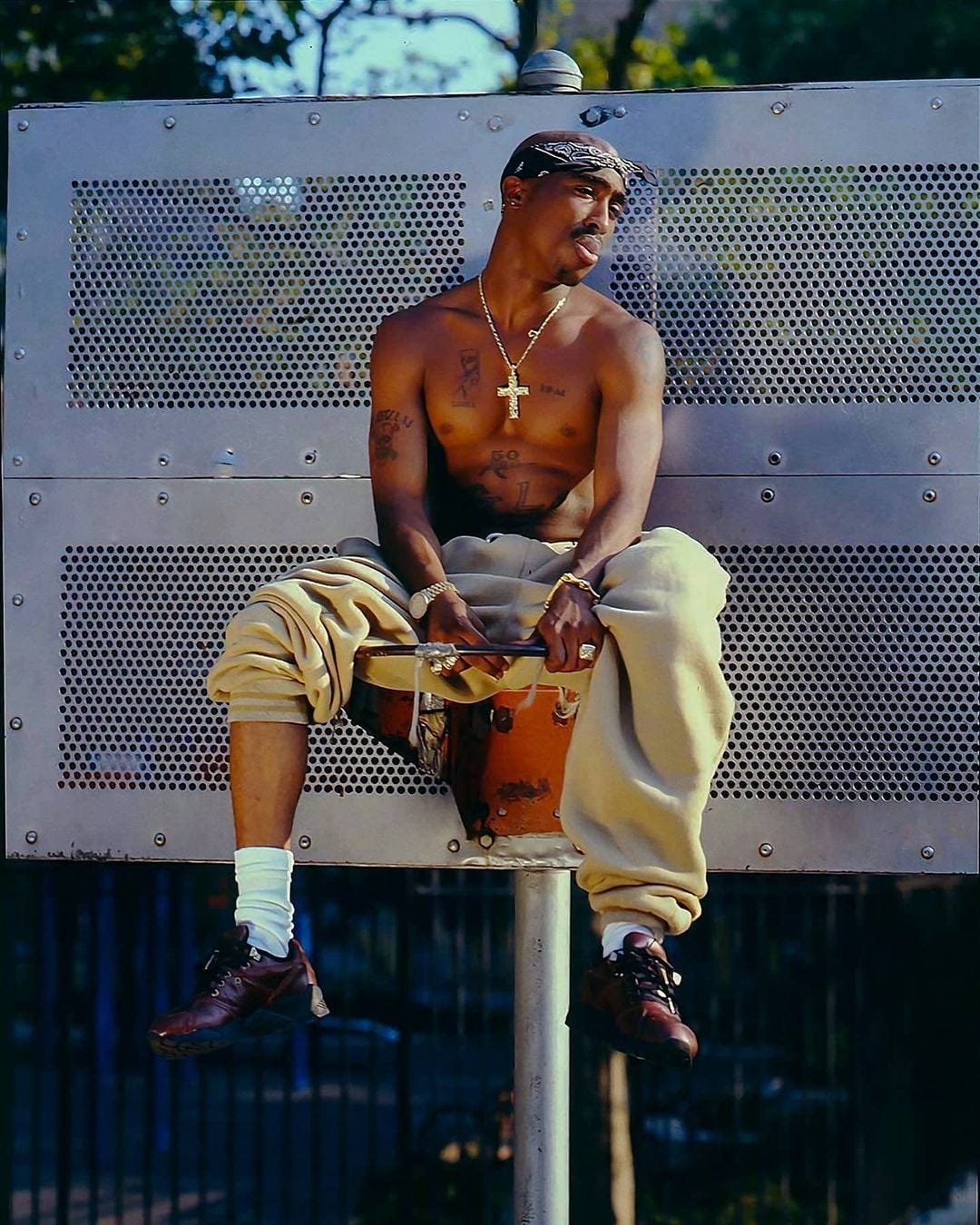The term streetwear gets thrown around a lot.
For some, it’s a veiled term used to denigrate brands that are considered low-culture.
For others, it signifies brands that made their way into existence from the streets and rose to the heights of pop culture.
No matter how you think of streetwear, whether currently or in the past, one thing remains clear with a little bit of digging: The Godfather of streetwear of Karl Kani.
You’ve heard of Karl Kani before.
It was a popular clothing brand in the mid-90s, and it's now making its way back into pop culture. For all intents and purposes this brand is responsible for the modern streetwear movement we know today.
And just like most trends, its rise is deeply connected with Hip-hop culture. So y’all know the drill.
Let’s talk about Karl Kani.
The Story Starts in 1968…
“‘Can I' was a question I asked myself all the time,” he says. “Can I be successful? Can I come from the inner-city and build a clothing brand? Can I be international? I didn’t know the answers to that, but I knew that if I called myself Karl Kani, every day I'll have to answer that question. And, yes, I can.” - Carl Williams, Red Bull
Carl Williams was born in Costa rica that year, and at just two years old he and his family migrated to the U.S. where he lived in Flatbush, Brooklyn.
As a child he grew an affinity for clothing and eventually learned the skill of tailoring from his father while working for his company. He used those skills to make his own unique outfits and eventually gained a reputation
In his early 20s, after years of apprenticeship, Carl moved to Los Angeles to pursue a fashion career and hopefully have his break.
He opened a store on Crenshaw Boulevard, and began to find a rhythm but after a few months he fell victim to an armed robbery. After all of that hard work, his clothing samples and sewing machines were gone and he was back at square zero.
Then Carl Williams Met Carl Jones…
Carl Williams continued to press forward and find his way in the world of fashion with Karl Kani.
He began to frequent tradeshows to grow his footprint in the industry, and though his store in Los Angeles closed, he soon met somebody who would change his life: Carl Jones of Cross Colours.
Cross Colours already had a foothold in the fashion world with sales upwards of $89million, and Carl Jones was a fan of the Karl Kani designs.
Cross Colours eventually signed Karl Kani under their parent corporation “Threads 4 Life” where he offered Carl Williams the brand space and access to retail partnership with their biggest supplier Merry Go-Round.
Together they released co-branded clothing and with the help Cross Colours, Karl Kani was in stores everywhere and receiving orders.
Just like that, it was a hit.
But the partnership wasn’t always smooth…
As with most partnerships, Carl Williams eventually outgrew the constraints of it.
By the mid-90s he was seasoned in the ways of the fashion industry and with Threads For Life facing its own financial issues he didn’t want to be damaged in the process.
With that in mind, he used the $500,000 in profit made from Karl Kani to purchase his trademark back from Carl Jones and establish his own imprint: Karl Kani Infinity.
Fast Forward to the Mid 90s…
“Baggy had a great run — we established a look and a fit that identified who we were and made us feel comfortable” Carl Williams, WWD
When Carl was still figuring out how to get the brand to new heights, he went to New York, and eventually ran into an aspiring music industry mogul who went to Howard University and worked at Uptown Records.
Of course, it was none other than P. Diddy.
Diddy was the first major figure in the music industry to do a campaign wearing Karl Kani, and after he wore the brand in 1991 Karl Kani began to gain notoriety.
And, with the rise of Karl Kani came a style that would define an entire era of fashion:
Baggy Clothing.
You ever wonder where the oversized clothing trend started?
No doubt that it’s attributed to hip-hop, but what nobody tells you is that it’s actually a trend started by Karl Kani.
As the Diddy photo above shows, Carl knew that tight clothing wasn’t really a thing that people embraced where he was from. Because of that, he made his clothes loose fitting — in line with the actual style of the time was.
People who wore mediums were buying XL’s. XL’s were buying XXL’s and larger. Every rap group at the time embraced the oversized clothing trend and Karl Kani came at the perfect time to capitalize on it.
Safe to say it paid off.
BY 1995…
Karl Kani was becoming a household name amongst the other urban streetwear brands at the time.
Wu-Wear was popping, and Ralph Lauren and Tommy Hilfiger were dominating the streets too. But Carl heard through the grapevine that one of Hip-hop’s most popular artists, Pac, wanted to meet him.
Pac was already wearing Karl Kani, but his potential co-sign was huge for the burgeoning brand for many reasons: First, it being the mid-90s, Pac was starring in films like Poetic Justice, and Juice. Second, 2Pac’s influence was global. If he co-signed a brand, its influence could spread further than it would through traditional marketing in newspapers, and tv.
After a brief meeting with Pac, Carl asked the iconic rapper how much he would charge to appear in a commercial for Karl Kani, to which Pac said “You’re Black, I don’t charge my people.”
Pac kept his word and eventually became the brand’s biggest influencer. With him sporting Karl Kani almost everywhere, its buzz spread until it became a bonafide staple of 90’s culture.
After Pac’s Co-Sign…
Karl kept growing after his co-sign with Pac — so much so that Karl Kani became an international brand selling in markets like Japan, China, and England.
Carl released more lines of clothing for kids including shoewear and despite the issues his former parent company Threads 4 Life faced he thrived with his new imprint.
He was invited to the White House to celebrate immigrant achievement in 1999, where he put on a fashion show to showcase his “All-Black” collection. He was truly clicking on all cylinders going into the 2000’s.
But, like most iconic 90s brands…
Karl Kani ran into its own share of issues (some of which followed him from Threads 4 Life), and had to weather the storm of changes in fashion. Those two factors led to a deterioration of the brand publicly, and eventually, it faded into the background.
Karl Kani Relaunched
In 2016, Karl Kani relaunched with a new collection and it’s still thriving today.
Kan has also been making inroads with a new generation of hip-hop stars in no small part because of the Migos, who wore his clothing in a lot of their music videos from around that time.
Kani even unearthed footage from 1996 for their 2018 partnership with Nas — a partnership that saw Karl Kani & Nas combining for the “Escobar Season” collection.
But it doesn’t stop there.
In 2020 Karl Kani launched the “Yes I Can” campaign highlighting artists from different disciplines who are hoping to make an impact with their work, and the in following year he refreshed the Karl Kani sneaker line starting with “The ‘89” in its different colorways (seen below).
What Now?
Karl Kani is still thriving and its founder Carl Williams can be seen/heard in various interviews especially with this being the 50th anniversary of Hip-hop.
On the streetwear side, baggy clothing is coming back in style again which further proves that all things come full circle.
Personally? I think it’s dope to see him get his shine.
For Carl, the question is no long “Can I?” it’s “didn’t I?”
Peace.









I love this. I never knew the backstory of the brand. And to know the founder is Afro-Latinx is also a vibe. Thanks for bringing us this story!